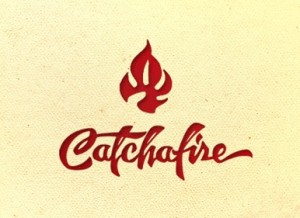Wanted: skilled volunteers to change the world
New media has been offering many possibilities for non-profit and social enterprises to find volunteers online, but an initiative called Catchafire is taking the center of attentions within the web. The purpose of the website is simple: provide a media platform where high-skill professionals are matched with enterprises. The professional gains experience and the organization saves money. In the end, everyone wins.
With its name inspired in the Bob Marley album ‘Catch a fire’, the website was launched in 2009 by the young entrepreneur Rachel Chong. She came up with the idea after realizing how difficult it was to combine her professional skills with voluntary work. There were many volunteer options, indeed, but she wanted to go beyond charity, and make a significant impact inside the non-profit organizations.
Watch: Rachael Chong’s interview to Fast Company
How can volunteer work be more effective?
After asking herself this question, Rachael realized that a new media platform would be the best way to connect high skilled professionals with nonprofit and social organizations. For instance, instead of paying someone to review their fundraising strategy, to develop a public relation plan or creating a social media plan, these organizations can save money by engaging professionals through Catchafire.
At the same time, individuals not only contribute to social projects, but also spend their time doing what they do best. For this reason, when professionals apply their high skilled qualities in volunteering they are even able to improve their résumé, leadership abilities and achieve personal objectives. As Rachael Chong explains in her TEDx presentation at Columbia University: “We know that people want to volunteer and we also know they don’t want to waste their time with it. If we were just assumed that people would want to volunteer their skills out of the goodness of their hearts, we would have never achieved the type of scaling impacts that we’ve set out”.
A revolution starts with volunteers
By matching non-profit and social enterprise organization with professionals’ profiles, Catchafire is able to create an individual designed network, with collective purposes. The initiative optimizes volunteer experiences by using pro bono service to valorize specific, professional skills and help non-profit organizations to grow.
Professionals may sign up free to Cathafire, but organizations must pay a membership fee to join the matching system. Catchafire also checks volunteers causes’ interests and time availability before sending them work options. In addition, they have special teams working with projects and volunteers to ensure that the entire process will succeed.
We help organizations identify their needs as short-term, discrete, and individual-based projects. Our projects are structured in this way to make it easy for professionals to help in the midst of their busy daily lives.
Their keywords are: experiences, efficiency and optimization. Catchafire allow high motivated volunteers to make an impact in society and has the ambition to change people’s mind over voluntarism in order to attract more brains and help more organizations. Their results encouraging: since its launch four years ago, Catchafire had registered 2,000 social organizations and nearly 10,000 pro bono professionals, which have saved nonprofits around US$7 million. In an interview, Rachael affirms that this is what motivates her team to catch a fire: “We believe if people don’t have access to talent they will never reach their full potential. We are helping them to thrive and grow.”[1] All stories of success and many volunteers’ testimonials are, of course, on Catchafire website.

Rachael Chong, elected one of the 100 most creative people in business, by Fast Company. Credit: Dorothy Hong
Fighting for a cause through new media
Voluntarism has always existed, but like many other forms of human interactions, it was boosted with the arrival of Internet. New media have helped nonprofit and social organizations to find innovative forms of engagement and recruit motivated volunteers to develop their issues, which definitely would be much more difficult if they relied only in traditional media.
But new media can also help organizations to engage people offline, and the success of Catchafire is a proof that new paradigms are being established. Imagine, for instance, if initiatives such as Catchafire were incorporated into Facebook, which claims to have one billion members. Thousands of volunteers from all over the world could be matched with social organizations that already have Facebook pages. As author Leah Lievrouw affirms in her book Alternative and Activist New Media (2011):
Alternative/activist new media employ or modify the communication artifacts, practices, and social arrangements of new information and communication technologies to change or alter dominant, expected, or accepted ways of doing society, culture and politics.
Make a difference every time, everywhere
Internet have inspired many other initiatives and helped organizations to find volunteers across the globe. In United States one of the biggest platforms – Volunteermatch.org – began as an idea find and engage volunteers in online communities. It was put into practice in 1995 by four MBA students in California, and had the purpose to gather people involved with social causes. Although it offers many opportunities of volunteering and charity across the country, the website does not provide personal matching, pro bono works and follow-up as Catchafire does. The concept of creating a network of volunteers, however, is already there: choose your favorite project or activity and help to make a difference.
Catchafire is now only based in United States, but in a recent interview, Rachael Chong affirmed that her team is already looking for expansions overseas: “Every day we are getting closer to the reality of a world where it is commonplace to serve for the common good. They are big vision things, but I believe Catchafire is contributing in a very significant way.”
Volunteer initiatives and platforms on the web:
- Catalista (App)
- Give Gab
- Global Volunteer Network
- Go Voluntr
- Idealist
- United Nations Volunteers
- United Planet
- Volunteer International
- Volunteer Match
- Vrijwilligerswerk (Dutch network)
- Voluntários Online (Brazilian network)
Do you know any other communities or initiatives which are improving volunteer experiences? Share here in the comments!
References:
[1] Tulich, Katherine. “To Catch a Fire”. 2012. Australia Unlimited. <http://www.australiaunlimited.com/society/catch-fire>
Schwartz, Ariel. Catchafire: “The eHarmony Of Volunteering For Busy Professionals”. 2011. Fast Company <http://www.fastcompany.com/1780269/catchafire-eharmony-volunteering-busy-professionals>
Leland, John. “Volunteering Rises on the Résumé”. 2012. The New York Times <http://www.nytimes.com/2011/11/02/giving/volunteer-work-gains-stature-on-a-resume.html?pagewanted=2&_r=4>
Leah A. Lievrouw. Alternative and Activist New Media (Digital Media and Society Series). Cambridge: Polity Press. 2011
